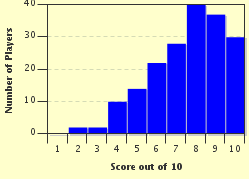Quiz Answer Key and Fun Facts
1. Which of these symbols is known to be older than the swastika?
2. The tessellating nature of the swastika was the reason that Greeks and Romans often incorporated it in what field?
3. The word "swastika" comes from what language, whose culture makes great use of it?
4. Seeing a left-facing swastika on a Japanese map is a certain indication that it marks the location of what?
5. Numerous sports and military groups adorned themselves with swastikas to indicate what?
6. This kabbalistic swastika from the 18th century is constructed from the letters of which alphabet?
7. Which country used these Messerschmitt Bf 109s during the Continuation War (1941-44) against the Soviet Union? (The answer is probably not as obvious as it looks!)
8. Did businesses ever promote their merchandise with swastikas?
9. Though he eventually ordered their removal, which British author -- strongly associated with India -- often had swastikas on the cover of his books?
10. Which southwestern American tribe knew the swastika as the "whirling logs"?
Source: Author
nautilator
This quiz was reviewed by FunTrivia editor
bloomsby before going online.
Any errors found in FunTrivia content are routinely corrected through our feedback system.


